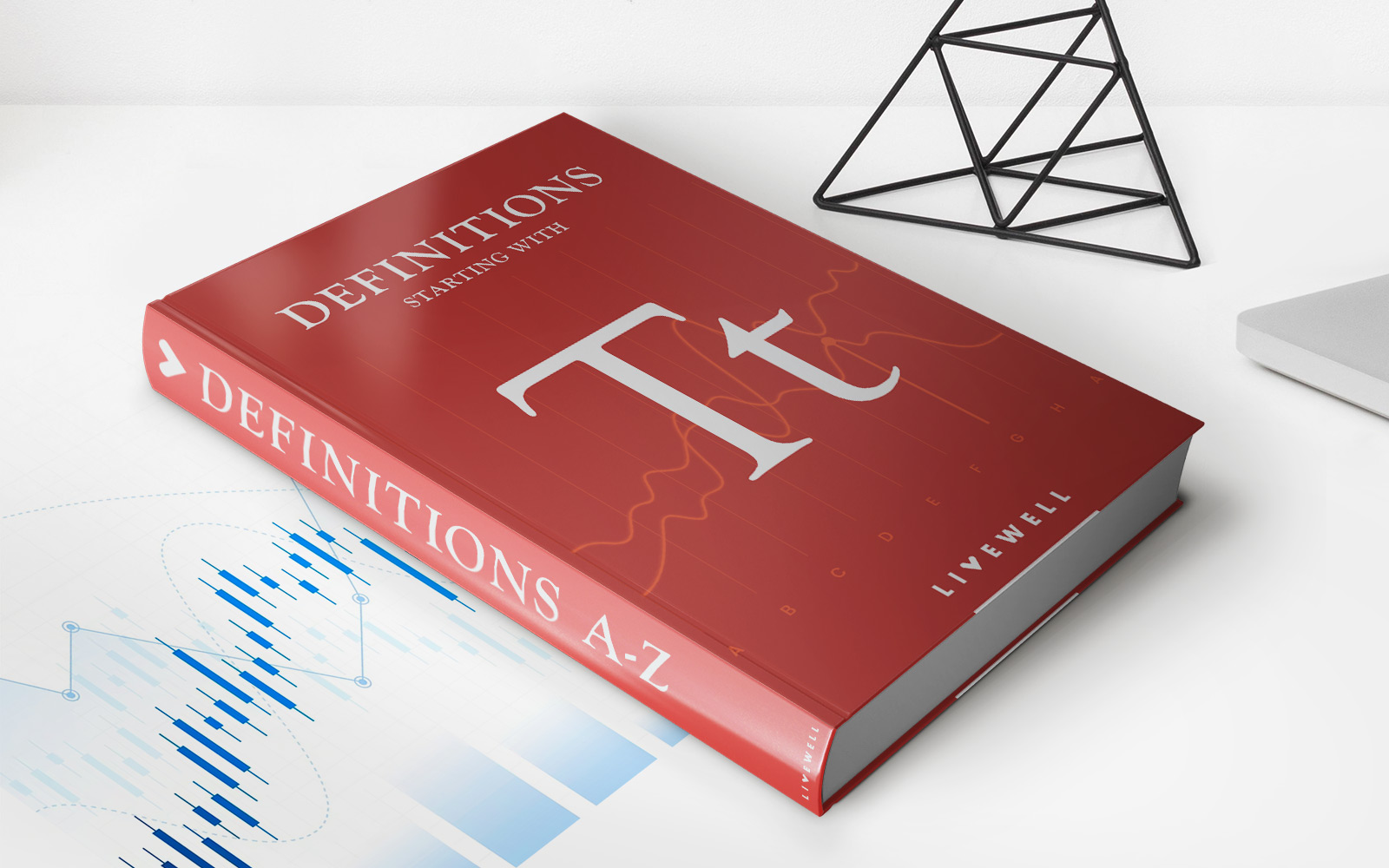

Finance
What Is Credit Hold
Published: January 13, 2024
Learn about credit holds and their impact on your finances. Understand how credit holds work and what steps you can take to resolve them.
(Many of the links in this article redirect to a specific reviewed product. Your purchase of these products through affiliate links helps to generate commission for LiveWell, at no extra cost. Learn more)
Table of Contents
Introduction
In the world of finance, credit is a fundamental aspect of conducting business transactions. It allows individuals and companies to access funds and goods without immediate payment. However, there are instances when credit privileges can be restricted or put on hold. This is known as a credit hold, a practice that serves as a safeguard for businesses to protect themselves from financial risk.
A credit hold is a temporary suspension of a customer’s credit privileges, typically imposed by a creditor or vendor. During a credit hold, the customer is no longer able to make additional purchases or access credit until the issue leading to the credit hold is resolved. This measure helps businesses mitigate potential losses and ensure the timely payment of outstanding debts.
Credit holds are commonly seen in business-to-business (B2B) transactions, where companies extend credit terms to one another. However, they can also occur in business-to-consumer (B2C) scenarios, such as when a credit card company limits a customer’s spending due to suspected fraudulent activities.
Imposing a credit hold is a significant decision for businesses, as it directly impacts cash flow and customer relationships. It is crucial for both parties to understand the reasons behind a credit hold, the implications it may have, and how to resolve the issue efficiently.
In this article, we will explore the concept of credit hold in depth, including its definition, reasons for imposition, implications, and the steps to resolve credit hold issues. We will also highlight the importance of credit hold in financial management and provide examples of credit hold in different industries.
Understanding credit hold and its implications is essential for both creditors and debtors. For debtors, it helps maintain credibility and ensures access to continued credit privileges. For creditors, it allows them to manage risk and protect their financial interests.
Let’s delve into the intricacies of credit hold and uncover its significance in the world of finance.
Definition of Credit Hold
A credit hold, also known as a credit freeze or credit suspension, refers to a temporary restriction placed on a customer’s credit privileges. It is typically imposed by a creditor or vendor as a precautionary measure to mitigate financial risk and ensure the collection of outstanding debts. When a credit hold is in effect, the customer is unable to make new purchases or access additional credit until the issue leading to the credit hold is resolved.
The purpose of a credit hold is to protect the financial interests of the creditor by preventing further extension of credit to a customer who may be experiencing financial difficulties or has failed to fulfill their payment obligations in the past. By imposing a credit hold, creditors can minimize the likelihood of incurring losses or engaging in transactions with customers who have an unreliable credit history.
It is important to note that a credit hold is different from a credit limit. A credit limit sets a maximum amount of credit that a customer can access, while a credit hold suspends credit privileges entirely. When a credit hold is in effect, the customer is unable to make any new purchases on credit until the issue is resolved or the credit hold is lifted.
Credit holds are typically triggered by specific events or circumstances. These can include prolonged non-payment, a significant decline in a customer’s business, suspicion of fraudulent activity, a history of missed payments or late payments, or a breach of contractual obligations. When any of these red flags arise, the creditor may decide to impose a credit hold to protect their financial interests.
While credit holds are often imposed by creditors, customers can also request a voluntary credit hold to manage their own credit exposure or to prevent unauthorized access to their credit accounts. In such cases, customers can contact their creditors and request a temporary freeze or restriction on their credit privileges.
The duration of a credit hold can vary depending on the reasons behind its imposition and the actions taken to resolve the issue. Once the issue is resolved or the credit hold is lifted, the customer regains their credit privileges and can resume making purchases or accessing credit as usual.
In the following sections, we will explore the reasons for imposing credit holds, the implications they can have on both creditors and customers, and the steps to resolve credit hold issues effectively.
Reasons for Imposing Credit Hold
There are several reasons why creditors or vendors may choose to impose a credit hold on a customer. These reasons are typically related to financial risk management and ensuring the collection of outstanding debts. Let’s explore some common reasons for imposing a credit hold:
- Payment Delinquency: One of the most common reasons for imposing a credit hold is when a customer has a history of late payments or non-payment. If a customer consistently fails to meet their payment obligations, a creditor may decide to suspend their credit privileges to minimize the risk of extending further credit.
- Financial Instability: If a creditor becomes aware of a customer’s financial instability, such as bankruptcy filings, business closures, or significant drops in revenue, they may impose a credit hold to prevent further credit exposure. This is done to protect the creditor’s interests and avoid potential losses.
- Excessive Credit Utilization: When a customer is utilizing their available credit to its maximum limit or consistently exceeding it, it can be a red flag for potential financial strain. Creditors may impose a credit hold to prevent further credit utilization until the customer’s financial situation improves.
- Suspected Fraudulent Activity: If a creditor suspects fraudulent activity, such as unauthorized or suspicious transactions, they may impose a credit hold to investigate the matter further. This helps protect the creditor from potential losses and ensures the integrity of the credit system.
- Violation of Contractual Obligations: When a customer fails to adhere to the terms and conditions outlined in a credit agreement or contract, creditors may choose to impose a credit hold. This could include actions such as breaching payment terms, exceeding credit limits, or engaging in prohibited activities.
It is important for creditors to carefully consider the reasons and circumstances before imposing a credit hold. While the primary objective is to protect their financial interests, it should be done fairly and based on accurate information. Open communication with customers is essential, as it can help address any issues and facilitate the resolution of outstanding debts.
Customers should also be aware of the potential reasons for a credit hold and work towards maintaining a positive credit history. Timely payments, responsible credit utilization, and adherence to contractual obligations can help prevent the imposition of a credit hold and preserve a good credit standing.
In the next section, we will discuss the implications of a credit hold for both creditors and customers and how it can impact their financial relationship.
Implications of Credit Hold
A credit hold can have significant implications for both creditors and customers involved in a business transaction. Let’s explore the various consequences and impacts of a credit hold:
- Restricted Access to Credit: The primary implication of a credit hold is that the customer’s access to credit is temporarily suspended. This means they cannot make new purchases on credit or access additional funds until the credit hold is resolved. This restriction can disrupt the customer’s normal business operations and limit their ability to grow or satisfy their immediate financial needs.
- Financial Strain on Customers: For customers who heavily rely on credit, a credit hold can create financial strain. Without access to credit, they may struggle to fulfill their payment obligations to suppliers, vendors, or other creditors. This can lead to cash flow problems, strained relationships, and potential disruptions in the supply chain.
- Cash Flow Impact for Creditors: Credit holds can have a direct impact on the cash flow of the creditor. If a customer on credit hold has outstanding debts, the creditor may experience a delay in receiving payment. This can affect their own financial stability and ability to meet their own obligations, such as paying suppliers, covering operational costs, or servicing their own debt.
- Risk Management: One of the main reasons for imposing a credit hold is to manage financial risk. By restricting credit privileges, creditors mitigate the risk of potential losses due to non-payment, fraud, or financial instability. A credit hold serves as a preventative measure to ensure the collection of outstanding debts and protect the creditor’s financial interests.
- Customer Relationship Impact: Imposing a credit hold can strain the relationship between the creditor and the customer. It may lead to a loss of trust and confidence, especially if the credit hold is unexpected or poorly communicated. Open and transparent communication is crucial to maintaining a positive business relationship and ultimately resolving the issue that triggered the credit hold.
It is important for both creditors and customers to be aware of the implications a credit hold can have on their financial well-being. Creditors should consider the potential impact on their cash flow and customer relationships before imposing a credit hold, while customers should be prepared to navigate the consequences of restricted credit access.
In the next section, we will delve into how a credit hold works and the steps involved in resolving credit hold issues effectively.
How Credit Hold Works
Credit hold is a process that involves the temporary suspension of a customer’s credit privileges. The following steps outline how a credit hold typically works:
- Identification of Issue: The first step in the credit hold process is the identification of an issue that triggers the need for such action. This could be prolonged non-payment, suspected fraudulent activity, financial instability, or a breach of contractual obligations. The creditor or vendor must assess the situation carefully to determine if a credit hold is necessary.
- Notification to the Customer: Once the decision to impose a credit hold is made, the creditor must communicate this decision to the customer. This notification should clearly state the reasons for the credit hold, any outstanding debts or obligations, and the steps necessary to resolve the issue. It is essential to maintain open lines of communication to ensure that the customer understands the situation and can take appropriate actions.
- Restriction of Credit Privileges: Once the customer is notified of the credit hold, their credit privileges are immediately suspended. They are no longer able to make new purchases on credit or access additional funds until the credit hold is resolved. This restriction helps mitigate the risk of further financial exposure for the creditor and encourages the customer to address the underlying issue.
- Investigation and Resolution: Both the creditor and the customer must work together to investigate and resolve the issue that led to the credit hold. This could involve gathering additional information, verifying payment records, addressing any outstanding debts, or providing evidence to refute allegations of fraudulent activity. The goal is to rectify the issue and find a mutually satisfactory resolution.
- Credit Hold Resolution: Once the underlying issue is resolved, the creditor can lift the credit hold. This could be done through a formal agreement, confirmation of payment, or evidence of improved financial stability. Upon the credit hold resolution, the customer regains their credit privileges and can resume making purchases on credit or accessing additional funds.
It is crucial for both parties to remain proactive and maintain open lines of communication throughout the credit hold process. This helps facilitate a smoother resolution and minimize any negative impacts on the customer’s business operations or the creditor’s cash flow.
While the process may differ slightly between creditors and industries, the fundamental steps involved in a credit hold typically follow the outlined process. Understanding how credit hold works can help both creditors and customers navigate the situation more effectively and work towards a resolution.
In the next section, we will explore the steps to resolve credit hold issues and how to restore credit privileges.
Steps to Resolve Credit Hold Issues
Resolving credit hold issues is crucial for both customers and creditors to restore normal credit privileges and maintain a positive business relationship. The following steps outline the process to effectively resolve credit hold issues:
- Acknowledge the Credit Hold: The customer should promptly acknowledge and understand the credit hold notification from the creditor. This includes reviewing the reasons for the credit hold and any outstanding debts or obligations that need to be addressed.
- Investigate the Issue: The customer should conduct a thorough investigation to understand the underlying issue that triggered the credit hold. This may involve reviewing payment records, assessing financial stability, or addressing any potential fraudulent activity. It is important to collect relevant documentation and evidence to support the resolution process.
- Resolve Outstanding Debts: If the credit hold is due to unpaid debts or late payments, the customer must take immediate action to resolve these outstanding obligations. This may involve making payment arrangements, negotiating payment terms, or providing explanations for any delays. Clear communication with the creditor is essential during this stage.
- Address the Root Cause: It is crucial for the customer to address the root cause of the credit hold to prevent future issues. This may require implementing changes in business practices, improving financial management, or providing assurances of stable cash flow. The customer should be proactive in addressing any concerns raised by the creditor.
- Provide Documentation: Throughout the resolution process, the customer should provide relevant documentation, such as financial statements, payment records, or any other information requested by the creditor. This helps substantiate the customer’s position and demonstrates their commitment to resolving the credit hold issue.
- Communicate and Negotiate: Open and transparent communication with the creditor is essential for resolving credit hold issues. The customer should maintain regular contact with the creditor, providing updates on the progress made and addressing any concerns or questions. Negotiation may be required to reach a mutually satisfactory resolution.
- Agree on a Resolution: Once the underlying issue is resolved, the customer and creditor should agree on a resolution. This may involve clear payment terms, revised credit limits, or other measures to prevent similar issues in the future. It is important to document the agreed-upon resolution in writing to avoid misunderstandings later on.
- Restore Credit Privileges: Once the resolution is agreed upon and any outstanding debts are settled, the creditor can lift the credit hold and restore normal credit privileges to the customer. The customer can resume making purchases on credit or accessing additional funds.
By following these steps and maintaining open communication, customers can work towards resolving credit hold issues effectively. It is important to take prompt action, address the root cause of the credit hold, and demonstrate a commitment to meeting payment obligations. This helps restore trust and maintain a positive business relationship with the creditor.
In the next section, we will highlight the importance of credit hold in financial management and its role in mitigating risk.
Importance of Credit Hold in Financial Management
Credit hold plays a crucial role in financial management for both creditors and customers. It serves as a protective measure to minimize financial risk and ensure the timely collection of outstanding debts. Let’s explore the importance of credit hold in financial management:
- Risk Management: Credit hold allows creditors to manage financial risk effectively. By imposing a credit hold on customers who exhibit signs of financial instability, payment delinquency, or suspected fraudulent activity, creditors can minimize the likelihood of incurring losses or engaging in transactions with unreliable customers.
- Collection of Outstanding Debts: A credit hold is an effective tool for ensuring the collection of outstanding debts. By temporarily suspending credit privileges, creditors can encourage customers to address payment obligations and resolve any disputes or issues that led to the credit hold. This helps maintain a healthy cash flow for the creditor.
- Control Cash Flow: Credit hold allows creditors to have better control over their cash flow. By preventing further credit utilization from customers on credit hold, creditors can avoid situations where they might extend credit that ultimately cannot be repaid. This helps maintain the financial stability and liquidity of the creditor’s business.
- Customer Screening: Imposing a credit hold allows creditors to assess the creditworthiness of their customers. By closely monitoring payment records, financial stability, and adherence to contractual obligations, creditors can mitigate the risk of engaging in transactions with customers who may pose a higher risk of non-payment or financial difficulties.
- Encourages Responsible Financial Behavior: Credit hold serves as a reminder to customers to maintain responsible financial habits. By temporarily suspending credit privileges due to late payment or non-payment, customers are encouraged to take immediate action to resolve outstanding debts and improve their credit standing. This fosters a culture of responsible financial behavior.
Credit hold is a valuable tool in financial management, as it helps protect the interests of both creditors and customers. It allows creditors to manage risk, ensure the collection of outstanding debts, and control cash flow. For customers, credit hold serves as a reminder to fulfill payment obligations and maintain a positive credit history.
It is important for creditors and customers to approach credit hold situations with transparency, open communication, and a willingness to resolve the underlying issues. By working together, both parties can mitigate financial risks, maintain healthy business relationships, and contribute to sound financial management practices.
In the final section, we will provide examples of credit hold in different industries to illustrate its widespread application.
Examples of Credit Hold in Different Industries
Credit hold is a widely practiced approach in various industries to manage financial risk and ensure the collection of outstanding debts. Let’s explore some examples of credit hold across different sectors:
- Manufacturing Industry: In the manufacturing industry, suppliers often extend credit terms to their customers, allowing them to purchase goods and pay at a later date. If a customer repeatedly fails to meet payment deadlines or exhibits financial instability, the supplier may impose a credit hold. This ensures that the supplier can protect their cash flow and minimize the risk of non-payment or default.
- Retail Industry: Credit holds are also prevalent in the retail sector, especially for retailers who issue store credit cards to customers. If a customer consistently exceeds their credit limit or demonstrates a pattern of late payments, the retailer may put a credit hold on their account. This helps manage credit risk and encourages the customer to address overdue payments before further purchases can be made on credit.
- Construction Industry: In the construction industry, contractors often extend credit to their clients for the provision of services or materials. If a client fails to make timely payments or breaches contractual obligations, the contractor may impose a credit hold, temporarily suspending further work until the issue is resolved. This safeguards the contractor’s financial interests and encourages the client to fulfill their payment obligations.
- Transportation Industry: Credit holds are also relevant in the transportation industry, especially for freight and logistics companies that provide credit terms to their customers. If a customer consistently delays or defaults on payments, or if there are concerns about the customer’s financial stability, the transportation company may impose a credit hold. This ensures that the transportation company can mitigate financial risk and maintain a healthy cash flow.
- Financial Services Industry: The financial services industry, including banks and credit card companies, often implement credit holds as a measure to mitigate fraud risk. If suspicious transactions or unauthorized activities are detected, the financial institution may place a temporary hold on the customer’s account or credit card to investigate the issue. This protects both the customer and the financial institution from potential fraudulent activity.
These examples highlight how credit hold is implemented across different industries to manage financial risk, protect cash flow, and ensure the timely collection of outstanding debts. By imposing credit holds, businesses can safeguard their financial interests and maintain a healthy credit environment.
It is important for both parties involved in credit hold situations to communicate openly, address the underlying issues, and work towards a resolution that benefits everyone. This fosters trust, maintains positive business relationships, and contributes to the overall financial stability of the industry.
Now, let’s conclude the article.
Conclusion
Credit hold serves as an important tool in financial management, allowing creditors to mitigate risk and ensure the collection of outstanding debts, while also guiding customers towards responsible financial behavior. By temporarily suspending credit privileges, creditors can protect their cash flow, manage financial risk, and foster healthy business relationships.
Throughout this article, we explored the concept of credit hold in depth. We defined credit hold as the temporary suspension of a customer’s credit privileges imposed by a creditor or vendor. We discussed the reasons for imposing credit holds, including payment delinquency, financial instability, suspected fraudulent activity, excessive credit utilization, and violation of contractual obligations.
We also highlighted the implications of a credit hold for both creditors and customers, emphasizing restricted access to credit, financial strain, impact on cash flow, risk management, and customer relationship dynamics.
Understanding how credit hold works is crucial, as it involves the identification of issues, notification to the customer, restriction of credit privileges, investigation and resolution of the underlying problem, and restoration of credit privileges once the issue is resolved.
Resolving credit hold issues requires acknowledging the credit hold, investigating the issue, resolving outstanding debts, addressing the root cause, providing documentation, communicating and negotiating with the creditor, agreeing on a resolution, and ultimately restoring credit privileges.
We explored the importance of credit hold in financial management, highlighting its role in risk management, the collection of outstanding debts, cash flow control, customer screening, and encouraging responsible financial behavior.
Lastly, we provided examples of credit hold in different industries, including manufacturing, retail, construction, transportation, and financial services, to illustrate its widespread application and relevance across various sectors.
In conclusion, credit hold is an essential practice in finance that helps mitigate financial risks, ensure the timely collection of outstanding debts, and maintain healthy business relationships. By understanding credit hold and its implications, both creditors and customers can navigate credit hold situations effectively, preserve their financial interests, and contribute to a stable and reliable credit environment.














